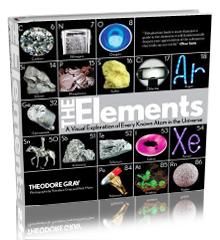E-beam furnace cathode. | |||
| Sample Image | Spin Video | QuickTimeVR Rotation | |||
| E-beam furnace cathode. This is a used cathode from the electron beam used to melt the above several tungsten button samples: see my story about the furnace for pictures of the furnace this button is part of. Philip Kapchenko of Kaistar, who gave me the button, offers the following information about it: As you have probably guessed this one is used. The crater in the center is called an ionic bombardment crater. When crater turns into a 2 mm hole the cathode is done. The crater happens because there can be no perfect vacuum, and electrons produce ions on their path to ingot. Ions move in path opposite to direction of electrons. Just like electrons they accelerate in the field between cathode and anode and hit the cathode back. Because of their great energy the ions evaporate material of the cathode. The most popular cathodes are made of tungsten, but hexaboride of lanthanum are also widely used, I heard about tantalum too but never seen one, This one is classical- parabolic lens sintered of tungsten. (Tungsten is quite hard to machine. Very brittle, chips all the time) Source: Kaistar R&D Contributor: Kaistar R&D Acquired: 6 August, 2004 Price: Donated Size: 0.4" Purity: 99.95% | |||
|

